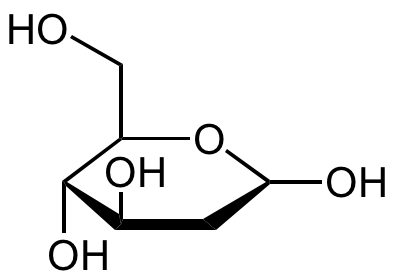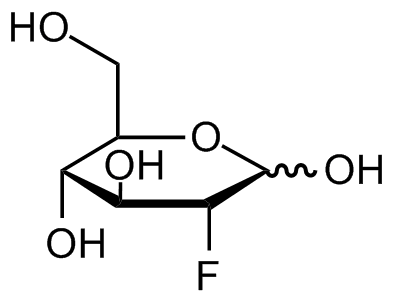
Chemical Structure
2-Deoxy-D-glucose
AG-CR1-3681
CAS Number154-17-6
Product group Chemicals
Estimated Purity>98%
Molecular Weight164.2
Overview
- SupplierAdipoGen Life Sciences
- Product Name2-Deoxy-D-glucose
- Delivery Days Customer10
- CAS Number154-17-6
- CertificationResearch Use Only
- Estimated Purity>98%
- Molecular FormulaC6H12O5
- Molecular Weight164.2
- Scientific DescriptionChemical. CAS: 154-17-6. Formula: C6H12O5. MW: 164.2. . Non-metabolizable glucose analog. An indirect inhibitor of hexokinase (HK), inhibiting the rate limiting step of glycolysis and consequently decreases glycolysis. Inhibits phosphorylation of glucose by hexokinase, which consequently results in the depletion in cellular ATP, the inhibition of protein glycosylation and the disruption of ER quality control by inducing the unfolded protein response. Useful agent for immunometabolism research. Anticancer agent. Shown to cause cell cycle inhibition and cell death in in vitro models of hypoxia, induce autophagy, increase reactive oxygen species production, activate AMPK, and block tumor cell growth in animal models. Potential antiviral agent. - Non-metabolizable glucose analog. An indirect inhibitor of hexokinase (HK), inhibiting the rate limiting step of glycolysis and consequently decreases glycolysis. Inhibits phosphorylation of glucose by hexokinase, which consequently results in the depletion in cellular ATP, the inhibition of protein glycosylation and the disruption of ER quality control by inducing the unfolded protein response. Useful agent for immunometabolism research. Anticancer agent. Shown to cause in vitro cell cycle inhibition and cell death in models of hypoxia, induce autophagy, increase reactive oxygen species production, activate AMPK and block tumor cell growth in animal models. Potential antiviral agent. 2-Deoxy-D-glucose (2-DG) is potentially useful for COVID-19 treatment due to its effects on the glycolytic pathway, antiinflammatory activity and interaction with viral proteins. 2-DG has previously been shown to be effective against other viruses in cell culture. Blocking glycolysis with non-toxic concentrations of 2-deoxy-D-glucose prevented SARS-CoV-2 replication and viral growth in Caco-2 cells.
- SMILESOC1C[C@@H](O)[C@H](O)[C@@H](CO)O1
- Storage Instruction-20°C,2°C to 8°C
- UNSPSC12352200



![2-Deoxy-D-glucose [154-17-6]](https://www.targetmol.com/group3/M00/36/9E/CgoaEWayQXaEL8ABAAAAANpopdw187.png)